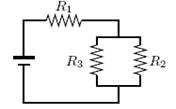Asia-Pacific Forum
on Science Learning and Teaching, Volume 11, Issue 1, Article 9
(Jun., 2010) |
Examples and Analysis of Questions
Researchers found that chemistry exam questions could be included into each of the six classifications of Bloom (Colletta & Chiappetta, 1989; Gronlund, 1995). During analysis of the questions, the following criteria were used.
1.- Knowledge. Questions on the knowledge level require the students to remember facts they have already learned and recall these as they have been learned.
Question: Can you define what is an atom?
2.-Comprehension. Students must be able to rephrase information, using their own statements and translate knowledge into new context and interpret graphs, tables, charts and cartoons.
Question: When a mechanical or electromagnetic wave goes from one medium to another, it undergoes a change in
(a) amplitude only; (b) both speed and wavelength; (c) speed only; (d) wavelength only.
3- Application. Students are required to identify the relevant information and rules to arrive at asolution and solve problems by using known algorithms.
Question: Two identical conducting spheres, A and B, carry equal electric charge. They are separated by a distance much larger than their diameter and exert an electrostatic force F on each other. A third identical conducting sphere C is initially uncharged and far away from A and B. Sphere C is then brought briefly into contact with sphere A, then with sphere B, and finally removed far away. The electrostatic force between A and B is now
(a) 3F=8 ; (b) F=2 ; (c) F=4 ; (d) F=16 .
4- Analysis. The analysis level requires that students separate an idea into its parts or elements and demonstrate an understanding of the relationship of the parts to the whole.
Question: In the circuit below, we increase the resistance R2.
If Ij is the current through resistor Rj (j = 1; 2; 3), then
(a) I1 and I2 both increase;
(b) I1 decreases and I2 increases;
(c) I1 and I2 both decrease;
(d) I1 increases and I2 decreases.
5- Synthesis. Questions on synthesis level permit students to devise ways to design experiments and test hypotheses. Students may be required to write a paper and a report in which ideas are synthesized or problems are solved.
Question: Design an experiment which can be use to find friction constant of a surface?
6- Evaluation. Questions at this level require students to make judgements about the value or merit of an idea, purpose, solution to a problem, procedure, method or product. This level requires students to use the other five levels of the taxonomy to varying degrees.
Question: Describe the effects of radioactivity on atoms. Explain your answer.

